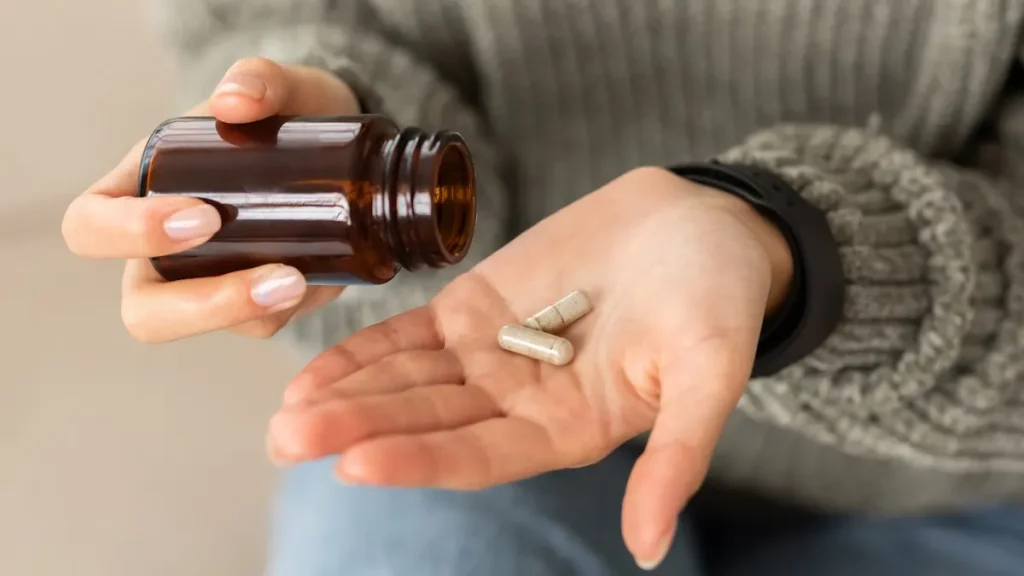The Rise of Personalized Herbalism Through 3D Printing
The convergence of herbal medicine and 3D printing technology is reshaping the supplement industry in unprecedented ways. Traditional pills, tinctures, and capsules—though widely available—often fail to consider individual variations in nutrient absorption, timing, and synergistic combinations. Now, with the emergence of 3D-printed herbal supplements, manufacturers can engineer highly customized formulations designed to maximize bioavailability, layer nutrient release, and tailor dosages to specific physiology. What was once considered futuristic is rapidly becoming a clinical and consumer reality, and early adopters in health-tech circles claim these innovations may usher in a new golden era of plant-based precision medicine. But the essential question remains: are these digitally-fabricated herbal capsules genuinely more effective, or are we simply dressing up ancient remedies in modern packaging?
Bioavailability: The Weak Link in Traditional Supplementation
To understand the potential advantage of 3D printing, we must start with a core limitation in herbal supplementation: bioavailability. Many plant-based compounds, despite their pharmacological promise, suffer from poor absorption in the gastrointestinal tract. Curcumin from turmeric, for example, is notoriously hard to assimilate without the presence of piperine (from black pepper). Likewise, resveratrol, quercetin, and some ginsenosides degrade quickly in the stomach’s acidic environment before reaching systemic circulation.
3D printing offers a solution through structural engineering at the capsule level. Using multi-compartment layering and matrix scaffolds, these printed pills can:
- Stagger nutrient release to align with digestive cycles or circadian rhythms.
- Embed protective barriers around sensitive compounds, shielding them from early degradation.
- Combine enhancers like lipids or pepper extracts in precise ratios to increase nutrient permeability.
- Deliver timed bursts of bioactives at different gut locations (e.g., releasing adaptogens in the small intestine and nootropics in the colon).
A 2024 pilot study published in Nature Biomedical Engineering demonstrated a 72% increase in absorption for a 3D-printed polyherbal capsule containing ashwagandha, rhodiola, and holy basil, compared to a conventional gelcap containing the same dosage. Participants also reported faster onset of effects and greater subjective calm. The key factor, according to researchers, was the pill’s architecture—designed to delay release until gastric transit had passed, then release adaptogens in tandem with peak cortisol decline.
Custom Devices: From Pharmacy to Kitchen Countertop
While pharmaceutical giants are pioneering industrial-scale 3D supplement printers, a parallel DIY movement is rising, bringing modular pill-printing technology into clinics, wellness spas, and even households. Startups like NutriFab, FormuBot, and HerbaForge have launched desktop-sized devices that allow consumers or practitioners to create personalized herbal stacks in real time.
These devices typically include:
- Ingredient cartridges, filled with freeze-dried herbal powders, nanoemulsions, or standardized botanical extracts.
- Smart apps, where users input their mood, symptoms, or biometric data (heart rate, sleep score, menstrual cycle phase) to receive real-time print recommendations.
- Biofeedback integration, where wearable devices sync with the printer to adjust the nutrient formula based on stress level, digestion, or energy usage.
- Combination logics, enabling adaptogens, nervines, nootropics, and gut flora modulators to be combined in optimal ratios based on individual tolerance or interaction profiles.
For instance, a user might print a daytime capsule with cordyceps, bacopa, and green tea extract for mental clarity, and an evening capsule with magnolia bark, L-theanine, and valerian for sleep support. Advanced printers can even produce chewable or dissolvable forms for users who have trouble swallowing capsules.
The Future of Formulation: From Batch to Bio-Intelligent
The 3D-printed model isn’t merely about reconfiguring dosage—it represents a fundamental shift in how we approach formulation. Historically, herbal products have relied on static recipes, crafted based on empirical traditions or pharmacopoeia guidelines. But bio-intelligent systems move beyond this, harnessing real-time data to generate adaptive formulas that respond to the user’s changing internal states.
Three breakthroughs make this possible:
- Dynamic Microdosing Algorithms: Rather than one-size-fits-all pills, these programs calculate optimal micro-doses per user based on genetics, lifestyle, and physiological data.
- Ingredient Modularity: Using micro-cartridge design, compounds can be rapidly swapped or combined without needing a full manufacturing reset.
- Chrononutrition Programming: Formulas are aligned with hormonal, circadian, and neurotransmitter rhythms for optimal effect timing—e.g., stimulating herbs for mid-morning, digestive bitters before meals, or nervine herbs post-workout.
Companies like SynHume and MycoMatrix are also experimenting with machine learning to analyze biometric patterns across populations and recommend novel herbal synergies previously undocumented in traditional medicine.

Safety, Regulation, and Ethical Oversight
While the benefits of customization and bioavailability are exciting, the rapid commercialization of 3D-printed supplements raises significant questions about safety, regulation, and oversight. Unlike pharmaceuticals, herbal products fall under the category of dietary supplements in most jurisdictions, which means they are not subject to premarket approval by agencies like the FDA or EMA. When combined with personalized AI-driven formulas, the regulatory gap widens.
Potential concerns include:
- Overdosing risk from poorly calibrated printers or inaccurate ingredient sensors.
- Unvetted combinations of herbs that may interact negatively or inhibit each other’s effects.
- Adulterated cartridges, especially if users source powders from unverified suppliers.
- Intellectual property disputes, especially as open-source formulation libraries expand and replicate proprietary blends.
- Lack of practitioner oversight, allowing biohacking enthusiasts to self-administer high-potency combinations without clinical support.
To mitigate these risks, several proposals have emerged:
- A voluntary certification body for 3D supplement printers, akin to UL or NSF.
- Blockchain-backed ingredient sourcing to verify authenticity and batch quality.
- App-based telehealth consultations required before unlocking high-potency herbal formulas.
- Standardized testing protocols for multi-compartment release capsules to ensure predictable pharmacokinetics.
The European Food Safety Authority (EFSA) is currently piloting a working group focused on digital herbal therapeutics, which may result in formal guidance by 2026. In the U.S., the FDA has not yet issued 3D-specific supplement regulations but has acknowledged the emerging field in its 2025 Innovation Agenda.
Clinical Use Cases and Early Results
While many applications are still in the early adopter phase, clinical trials and case reports suggest that 3D-printed herbal formulations hold promise in several domains:
- Digestive health: Customized probiotics and bitter tonics that dissolve in stages across the GI tract show improved outcomes for IBS and dysbiosis.
- Cognitive enhancement: Layered adaptogenic stacks with optimized release timing reduce brain fog and improve executive function in burnout patients.
- Menstrual cycle syncing: Four-phase capsule series designed for each menstrual stage (follicular, ovulatory, luteal, menstrual) help regulate mood and energy in women with PCOS or PMDD.
- Athletic recovery: Anti-inflammatory herbs combined with branched-chain amino acids and magnesium delivered post-workout show improved lactic acid clearance.
- Sleep optimization: Dual-phase capsules releasing GABA-supportive herbs first, then melatonin precursors like L-tryptophan, improve sleep latency and quality.
Though these examples are promising, long-term studies with large sample sizes are still needed to confirm the efficacy and safety of sustained use.
The Future: Pharmacy as Fabrication Lab
Imagine walking into a pharmacy or wellness clinic not to buy a bottle off the shelf but to print your own tailored capsule after a biometric scan. This is the vision driving investment in 3D-printed phytomedicine—a future in which healing is personalized, precise, and participatory. Users become co-creators in their treatment plans, combining ancient plant wisdom with modern digital fabrication to design protocols as unique as their own biology.
But for this future to succeed equitably, it must be paired with access, regulation, and education. Users must understand the power—and limits—of herbal medicine. Practitioners must be trained not just in herbs, but in data science and interface ethics. And regulatory bodies must evolve fast enough to ensure safety without stifling innovation.
Conclusion: Innovation Rooted in Tradition
At its core, the rise of 3D-printed herbal supplements doesn’t discard tradition—it reframes it. Herbalism has always been a science of context, balance, and individuality. What’s changing now is our capacity to scale that individuality using data and design. Whether this technology truly delivers superior outcomes remains to be seen, but its promise lies in honoring both the intelligence of plants and the uniqueness of people. In a world overwhelmed by general solutions, this quiet revolution may offer something rare: supplements that finally fit like second skin.










































